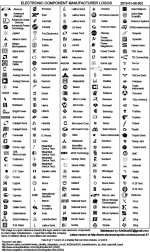Chuck D. Bones
Circuit Wizard
I started with this:

This only a guide, it does not contain enough detail to identify whether a part marking is legit or counterfeit. For that, you have to visit the manufacturer's website for details info on the logo, part numbering and LDC marking.
I went to SSI's website and searched their inventory for 2N404. Finding those, I looked for other Ge part numbers. There are distributors that do business in the niche market of obsolete and hard-to-find parts. SSI is one of them. SSI does not manufacture semiconductor die. They buy and resell complete components. In the case of obsolete parts, they frequently buy surplus die from manufacturers, test it, store it and package it with their own logo. I'm guessing that's what happened with the 2N404s.

This only a guide, it does not contain enough detail to identify whether a part marking is legit or counterfeit. For that, you have to visit the manufacturer's website for details info on the logo, part numbering and LDC marking.
I went to SSI's website and searched their inventory for 2N404. Finding those, I looked for other Ge part numbers. There are distributors that do business in the niche market of obsolete and hard-to-find parts. SSI is one of them. SSI does not manufacture semiconductor die. They buy and resell complete components. In the case of obsolete parts, they frequently buy surplus die from manufacturers, test it, store it and package it with their own logo. I'm guessing that's what happened with the 2N404s.




